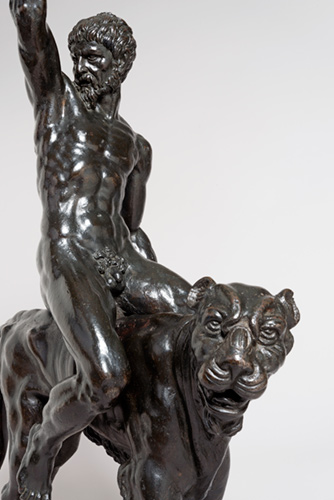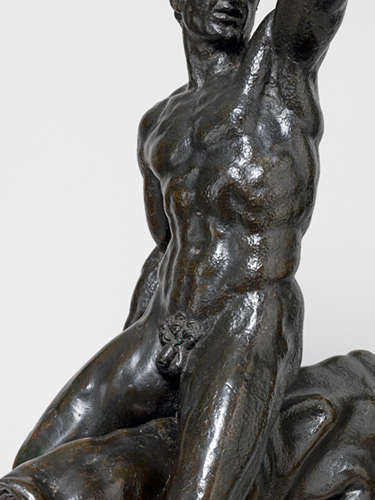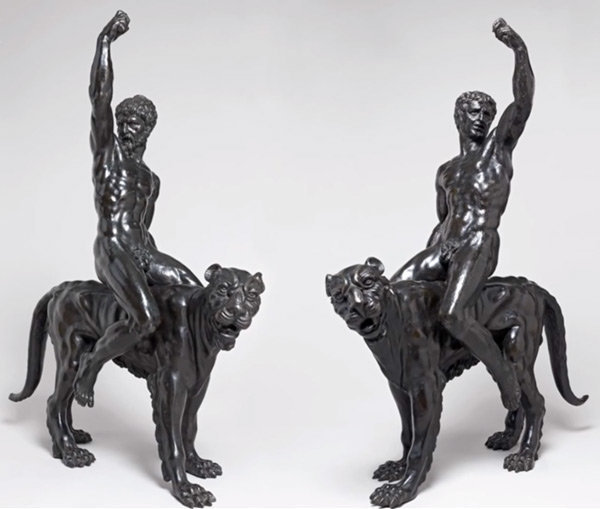For centuries, collectors and scholars believed there were no surviving bronze sculptures by the Renaissance genius Michelangelo. Has that narrative finally changed?
Monday July 6, 2015 was a monumental day for the art world as a panel of international experts presented papers that argued for and against the reattribution of the “Rothschild Bronzes” to Michelangelo. The pair of 16th-century sculptures, each depicting naked, bearded men riding panthers, have been attributed to a variety of sculptors, including Tiziano Aspetti, Jacopo Sansovino, and Benvenuto Cellini. Debate surrounding the sculptures began in February 2015.

(Michelangelo Buonarroti), “Nude Bacchants Riding Panthers” (detail), circa 1506-1508, bronze.
Fitzwilliam Museum, Cambridge
Scholars have suggested that the sculptures display a level of anatomical precision that is characteristic of the world’s most famous sculptor. Further, a drawing survives from one of Michelangelo’s students depicting what many believe to be the sculptures themselves. The July 6 symposium, which was held in the Howard Theatre, Downing College, Cambridge, England, included more than 10 presentations and roundtable discussions.

(Michelangelo Buonarroti), “Nude Bacchants Riding Panthers” (detail), circa 1506-1508, bronze.
Fitzwilliam Museum, Cambridge
The attribution is groundbreaking because no bronze sculptures by Michelangelo’s hand survive. Momentum appears to be in favor of a Michelangelo identification, but considerable debate remains, and the discussion will likely last for years to come.
To learn more about the symposium and the topics presented, visit the Fritz Museum.
This article was featured in Fine Art Today, a weekly e-newsletter from Fine Art Connoisseur magazine. To start receiving Fine Art Today for free, click here.








